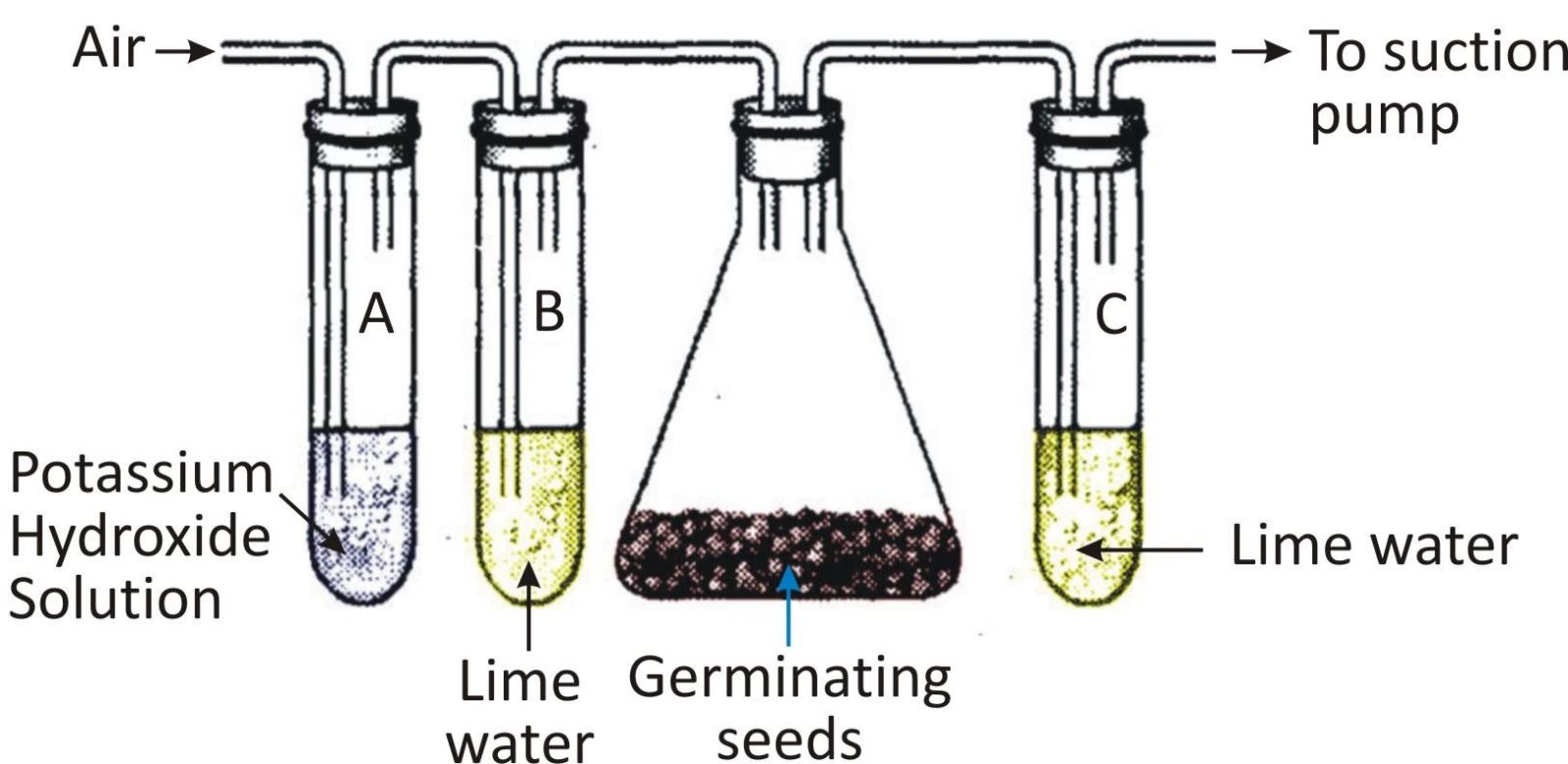Respiration in Organisms Worksheet-3
(a) In earthworm exchange of gases occurs through the moist skin
(b) The breakdown of glucose in plant cells is similar to that in other living beings
(c) Respiratory organs such as tracheae and spiracles are found in insects as well as lower organisms
(d) Animals such as elephants, frogs, lizards, snakes have lungs in their chest cavities like that of human beings.
(i) In insects, circulating body fluids serve to distribute oxygen to tissues.
(ii) Yeasts respire aerobically, therefore, they are used to make wine and beer.
(iii) CO2 concentration is more in alveolar air than in expired air.
(iv) On an average, an adult human being at rest breathes in and out 15-18 times in a minute.
(v) Capacity of human lungs for air in a healthy person is 1500 mL.
(vi) Sneezing expels the foreign particles from the inhaled air.
(a) (i), (ii) & (v) are false, (iii), (iv) & (vi) are true
(b) (i), (ii) & (iii) are false, (iv), (v) & (vi) are true
(c) (ii) & (iv) are false, (i), (iii), (v) & (vi) are true
(d) (ii) and (vi) are false, (i), (iii), (iv) and (v) are true.
(a) Relaxation of diaphragm and intercostal muscles
(b) Contraction of diaphragm and intercostal muscles
(c) Contraction of diaphragm muscles
(d) Contraction of intercostal muscles
(a) Bronchiole (b) Alveolus
(c) Air chamber (d) Tracheiole

(a) Lime water in test tube B turns milky
(b) Lime water in test tube C turns milky
(c) Potassium hydroxide solution in test tube A turns red
(d) Temperature in the flask will go down
(a) It is due to accumulation of lactic acid
(b) It is due to breakdown of glucose
(c) It is due to slow circulation of blood
(d) It is due to muscle cells respiring aerobically
(a) Nostrils → larynx → trachea → alveoli → bronchi → bronchioles
(b) Nostrils → trachea → larynx → alveoli → bronchi → bronchioles
(c) Nostrils → larynx → trachea → bronchi → bronchioles → alveoli
(d) Nostrils → trachea → larynx → bronchi → bronchioles → alveoli
(i) Colour and design of the balloon.
(ii) Size and shape of the balloon.
(iii) Whether to breathe in before blowing.
(iv) Material the balloon is made of.
(a) (i) & (ii) (b) (ii) & (iii)
(c) (i), (iii) & (iv) (d) (ii), (iii) & (iv)
(a) Blood containing oxyhaemoglobin
(b) Alveoli
(c) Spiracles
(d) A thin moist surface
(a) Percentage Composition
Carbon dioxide: 0; Nitrogen: 83; Oxygen: 17; Water: 0
(b) Percentage Composition
Carbon dioxide: 5; Nitrogen: 80; Oxygen: 15; Water: 0
(c) Percentage Composition
Carbon dioxide: 4; Nitrogen: 77; Oxygen: 16; Water: 3
(d) Percentage Composition
Carbon dioxide: 0; Nitrogen:76; Oxygen:21; Water:3
(a) Oesophagus, uvula, food
(b) Kidney, epiglottis, water
(c) Oesophagus, epiglottis, food
(d) Liver, uvula, water
(a) Air rushes into our lungs
(b) Our ribs are raised
(c) Our diaphragm is curved upwards further
(d) The volume of our chest increases
Answer Key: